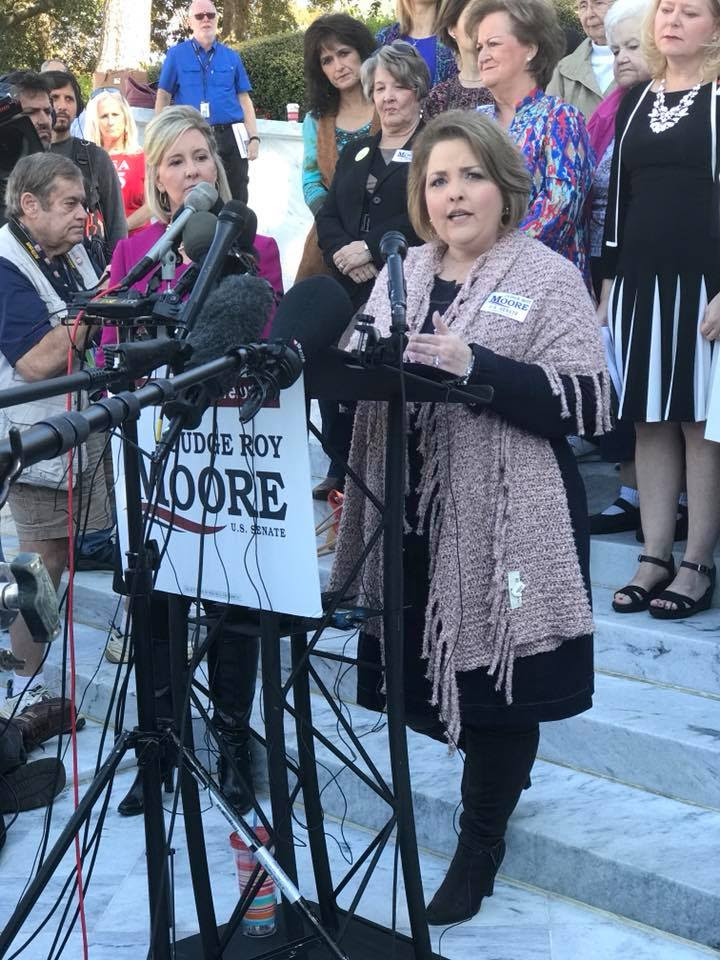There’s been a lot piling up in my e-mail box as I prepared The Rise and Fall of the TEA Party, so now that I have that wrapped up I can move on to a few long-overdue things, like this one. As always, it’s things I can speak to in a couple sentences to a few paragraphs, wrapped up in a rhetorical bow.
On the Maryland front
I’ve received a number of items from my old friends at the Maryland Public Policy Institute but these few stuck out at me. First was Marta Mossburg’s assessment of our governor’s Presidential election chances:
If Gov. Larry Hogan decides to challenge Donald Trump for the presidency, he will lose before stepping into the ring.
A man who in the State of the State and at his second inauguration tried to out Roger Mr. Rogers with calls for bipartisanship has no chance outside the small neighborhood of Maryland. Anyone with an R beside their name is evil to those on the progressive left throughout the nation even if they never don a MAGA hat. And what in his record will speak to the national Republican base so loudly they would be willing to dump Mr. Trump for him?
“I lowered tolls!” isn’t a rallying cry to stir the masses. Neither is “I stopped Democrat overreach!” And “I supported the most expensive public transportation project in the world” won’t win him an invitation to break bread with wealthy Republican donors who want to shrink government.
“Maryland needs to win for Gov. Hogan to win higher office”, MPPI blog, February 5, 2019.
Not to mention we already have a socially-liberal #NeverTrump in the running for losing the GOP nomination. But the point remains: Donald Trump, for all his faults, is probably more conservative than Larry Hogan is. A conservative Larry Hogan would veto practically everything the Maryland General Assembly passes (instead of caving in to some of their worst proposals) because how often do they even consider his sponsored bills? Add to that the fact that Trump will actually campaign for conservatives (unlike what happened to a certain Maryland U.S. Senate candidate last time around) and the thought that Hogan would be wise to concentrate on Maryland makes more sense.
And if that wasn’t enough, MPPI scored big with their assessment of Maryland’s spending problem and long-standing alternatives to a job-killing $15 per hour minimum wage.
A fast-growing industry
Speaking of Governor Hogan and caving in: despite Maryland’s foolish refusal to get in on the game, extraction is the nation’s fastest-growing industry. But even Andy Harris has been reluctant to advocate for offshore drilling despite its potential benefits, as this op-ed suggests. As I often say, the reason environmentalists oppose seismic testing isn’t the harm to creatures but is truly that of what we may find is out there now that testing methods have improved over those of 30 years ago.
On the other hand, those trying to kill industry in the country are hard at work trying to fool people. Two cases in point come from the Capital Research Center, which posted a couple good pieces on union influence in politics these days in left-leaning states as well as the federal government. But if you really want to take the cake, just listen to what Slow Joe Biden said a few days ago:
It’s time we told the truth about what unions have really done for America.
With the dues they paid, the picket lines they walked, the negotiations they sweated through, those union workers weren’t just standing up for other union workers.
The rights they fought for benefited every American worker.
Minimum wage. Overtime pay. The 40-hour workweek. Safer working conditions. The elimination of child labor, for crying out loud. The list goes on and on.
This country wasn’t built by a few Wall Street bankers, CEOs, or hedge fund managers. It was built by the American middle class.
“It’s Time To Tell The Truth About Unions.” e-mail from American Possibilities.
Here’s a little more truth: I was often told by a relative – who was a union steward, for crying out loud – that “unions are for the lazy man.” When the incentives become perverse, like intentionally slow-walking a task so the productivity expectation remains artificially low, it’s apparent that unions provide a floor level of benefits but also create a ne plus ultra of accomplishment. The most productive and innovative have no place in a union.
Good news for the Constitution (party)
Did you know the Constitution Party has 110,000 registered voters around the country? It doesn’t seem like much but worth remembering is that not all states specifically allow registration to any party but the big two.
But I love the contributions being made by an unknown person who goes by the nom de plume “Digital Paul Revere.” In one statement, DPR said a lot about the type of person the Constitution Party should attract:
I am writing to you because I have witnessed firsthand the absolute horror of socialism. These essays are not newsletters. They aren’t meant to bring you recent Party news. They are long-form commentaries on current events happening in our country. They are viewpoints, seen through the lens of a Millennial American who has lived for a significant length of time under a true socialist dictatorship: China. These essays are meant as an olive branch to young Americans, frustrated by the perversion of the political process today, alienated by the major political parties, crushed under unimaginable debt with little hope of ever having the means to repay it, and “politically homeless”. They are also meant to give older generations of Americans a glimpse into the future that awaits your children and grandchildren, should you fail to act now.
In these essays, I hope to provide a point of view that will help fellow American patriots see the danger that our nation is in and call to action all who wish to see the situation improve. I can tell you with absolute conviction that many Americans do not know the extent to which socialism has corrupted our systems and institutions. I didn’t know either. It is only after having lived under true socialism that I can see the telltale signs of its growing influence on our country.
“Introduction to a Reformed Millennial,” DPR.
In a similar vein, DPR writes that it’s better to be an American. I like that.
The Constitution Party also gained a couple more officeholders thanks to partisan switches – one from Republican and another from a conservative Democrat who was elected based on their votes in a North Carolina race. In looking up the results, though, I found this gentleman was an incumbent county commissioner who turned out to be a primary election loser that took advantage of the CP’s newly-won ballot access to avenge his primary loss. In most cases, “sore loser” laws would prevent this, so his victory comes with an asterisk, too. It’s tough to compete with the duopoly, though.
The Kochs of the Left
The penultimate piece before I go is a groundbreaking report from the Capital Research Center on a left-wing dark money entity called Arabella Advisors. If you ever wonder how these left-leaning “grassroots” groups suddenly pop up out of nowhere, this piece may help you to understand that it’s some serious Astroturf. And they had the nerve to call the TEA Party “Astroturf?” Sorry, I know some of the TEA Party founders and believe me, they are legit. If you’re still not convinced, read this.
Flogging the scamPAC horse
That’s not to say that the TEA Party didn’t eventually sell out, though. Call it flogging a dead horse, but the TEA Party Express is coming off like a scam PAC with an appeal that claims:
The recent polls coming out are showing President Trump behind many of the Democratic candidates. Now, as financial disclosures are due for the first quarter of the year, we see that these Democrats are raising unheard of millions of dollars – over $70 million and counting. So Trump is behind in both the polls and in the critical fight for financial resources to communicate with the American people.
We launched the “Tea Party for Trump” to get conservatives off the sidelines and back in the field to preserve the tremendous gains we have made over the last two years and achieve even more victories ahead in a second term of Trump-Pence.
“Fight back for Trump” e-mail from Sal Russo of the Tea Party Express.
There are no less than seven different linked appeals for donations.
Now I’m not sure if the TPX (as I called it for shorthand in my book) ever ran a bus tour for the 2018 midterms – if they did it was nowhere near my radar and I think I have a decently attuned one. But if Lloyd Marcus is to be believed they may get the band back together for Trump 2020. We will see.
Still. it’s a shame how far the TPX has fallen. Luckily my friend Mark Williams isn’t dead or he may be rolling in his grave about this one.
Now that I have pretty much cleaned out my e-mail, I think we can put odds and ends to bed for a few weeks.





